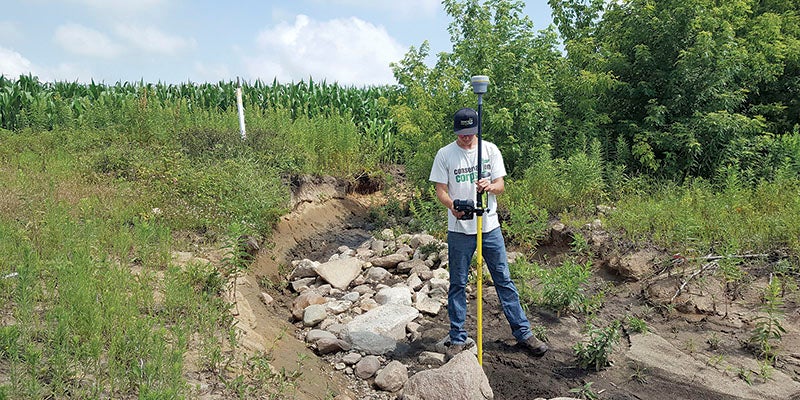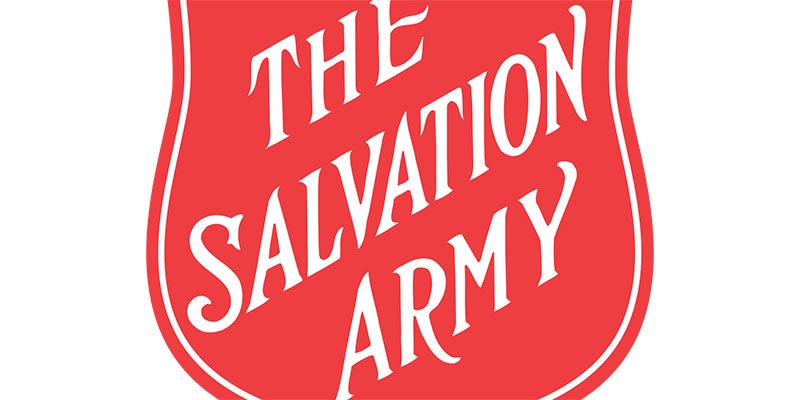Projects lined up for Dobbins: Over $123K in financial assistance has been made available
Published 9:01 am Saturday, January 20, 2018

- David Wick, a Conservation Corps apprentice for the Cedar River Watershed District, surveys a gully last summer in Red Rock Township that is expected to be addressed with a grass waterway under a new federal initiative. Photo provided
Storm water runoff from nearly 1,300 acres in the Dobbins Creek watershed northeast of Austin will be treated in future years by numerous projects on farmland, thanks to new federal funding.
The U.S. Department of Agriculture now has $123,750 available as financial assistance on projects in the Dobbins Creek watershed — one of two Minnesota watersheds selected — that flows into the Cedar River on Austin’s east side.
The funds will support about six projects with agricultural producers who already have worked with local conservation staff on plans to rebuild or build new grass waterways; water-and-sediment-control basins; and grade-stabilization structures as well incorporate cover crops.
These projects will reduce the sediment and pollutants reaching Dobbins Creek from storm water running off farmland, said Justin Hanson, director of the Mower County Soil and Water District, who also serves as administrator of the Cedar River Watershed District.
“Given the backlog of projects in the Dobbins area, this funding is crucial for allowing these good conservation practices to happen without further delay,” he said. “These projects will compliment our numerous other investments of resources and funding in the Dobbins watershed.”
Dobbins Creek — which has north and south branches that form a sub-watershed within the Cedar River watershed —continues to be targeted by CRWD with projects and funding from the local, state and federal levels due to its propensity for flash flooding, which stems from the terrain and current land-management practices not offering much for natural water storage.
Cover cropping involves planting a second, unharvested crop in coordination with regular cash crops, such as corn and soybeans. The soil-health practice can help reduce soil erosion and storm water runoff; increase storm water infiltration in fields; and keep excess nutrients from leaving the soil, among other benefits.
CRWD and Mower County’s USDA-Natural Resources Conservation Service field office will administer projects through the National Water Quality Initiative with the federal Environmental Quality Incentives Program. Applications need to be submitted by Feb. 2.
“This funding will support projects on the land that strengthen ag operations while also assisting landowners in improving water quality,” said Brian DeVetter, district conservationist with the Austin-based NRCS office for Mower County.
Through NWQI, farmers, ranchers and forest landowners get personalized advice and financial assistance through EQIP to address a broad range of natural resource concerns, including water quality.
EQIP is a voluntary program providing financial and technical assistance to agricultural producers. These contracts provide financial assistance to help plan and implement conservation practices that address natural resource concerns and for opportunities to improve soil, water, plant, animal air and related resources on ag land and non-industrial private forestland.
Applications for EQIP are accepted on a continuous basis; however, NRCS establishes application acceptance or submission deadline dates for evaluation and ranking of eligible applications.
Dobbins Creek — listed by the state as “impaired” for aquatic life and turbidity (cloudiness) — has north and south branches converging at Austin’s Jay C. Hormel Nature Center. A large dam on it forms East Side Lake before it flows into the Cedar River.
Overall, the Dobbins Creek watershed totals more than 25,700 acres. About 71 percent of those acres are used for intensively farmed row crop ag land, with most being prime farmland that continuously produces high-grain yields.
CRWD is highly focused on Dobbins, especially through its nearly $8.4 million, five-year Capital Improvement Project initiative launched in 2016 to improve water quality by constructing 25 water-retention structures on farm fields, mostly in upland or headwater areas. A large majority of the projects are planned for the Dobbins watershed.
In 2014, CRWD also launched a $2.1 million project mainly funded by the state to partner with the University of Minnesota in implementing projects in the Dobbins watershed while extensively testing for water quality and aquatic life. A $1.5 million state grant enabled CRWD to implement a full suite of projects that fit nearly any landscape in the watershed.
Under that project, CRWD has taken a “treatment train approach” that has involved addressing upland field erosion; holding water and sediment before entering Dobbins; treating nutrients between the fields and creek; stabilizing eroding stream banks; and restoring critical in-channel features that support aquatic life.





